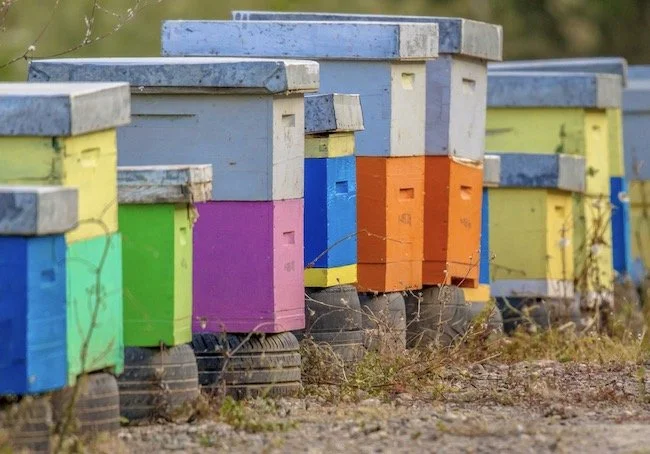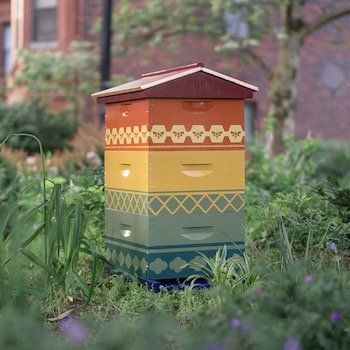There are over 100 million bee hives in the world. That means there is also an extremely large number of bee boxes, like the ones shown here. Most beekeepers stick with tradition and paint their bee boxes white. However, there are several reasons why more colourful variations are becoming popular.
Firstly, colour can affect the internal temperature of the bee boxes – light colours reflect the sun's heat, whereas darker colours absorb the heat. Depending on the climate bees are being raised in, this can prove beneficial. Secondly, when returning to the colony after collecting pollen, colour directs bees to their correct hive. Some beekeepers will paint their hives in different tones of the same colour, while others opt for a range of hues. Bees do not see colour the same way humans do. They see ultra-violet light, enabling them to experience a higher spectrum of colour. To bees - reds, burgundies and browns blend together, appearing as black. Blue, green, orange, yellow or pink bee boxes are their go-to colours.
Producing multi-coloured bee boxes also assists in the prevention of drift. This occurs when bees move from hive to hive, spreading diseases that jeopardize the general health of a particular colony. Different box colours keep bees focused and returning to the same location. Some beekeepers will even paint distinctive patterns or images on the boxes to maximize their uniqueness. With such valuable goods housed inside these hives, it's worth the effort for beekeepers to think “outside the box.”
Photo: The Best Bees Company

